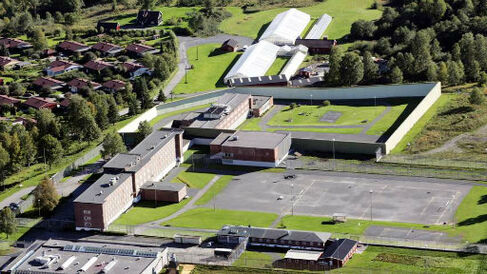Anna Eriksson Blog

Designing dangerousness: Interviewing prisoners in Norway and Australia
I am sitting on the couch, my back to the window and the coffee table between me and the person I am interviewing. He’s sitting opposite me on a chair, his back to the door and effectively blocking the exit. I am sipping a cup of black coffee, the fourth for the day, kindly prepared and given to me by the interviewee. This is Ila prison, a high security prison in Norway that houses some of the most dangerous prisoners in the country. The interviewee, a prisoner who is doing time for serious sex offences (a fact he volunteers, in this research project I never asked), happily chats away about the overall topic of the research – what makes prisons better or worse. The room we are using is one used for visits, with the fluffy couch and well used coffee table. The prison staff is in their office across the hallway, so I am by no means isolated or on my own. There is a relaxed atmosphere and even though I am always aware that something could happen (it’s impossible to spend time inside a prison without that awareness settling heavy on your shoulders), the clear expectation is that nothing will.
Three months earlier I was interviewing prisoners and staff in a high security prisons in Australia. The atmosphere there was far from relaxed. The interview rooms have their special design and their own rules of use. I am always closest to the door which is never completely closed. I know exactly where the distress/panic button is under the table. I am wearing an alarm that will go off if I pull the string, or if I end up in a horizontal position as a result of being assaulted and unable to pull the string due to being unconscious. The table is bolted to the floor and there is a distinct lack of fluffy pillows and hot coffee. The prisoner on the other side of the table is not serving time for a violent offence, but every aspect of the physical environment is essentially shouting to me that this person is dangerous and I need to be vigilant at all times to any behaviours that might mean an attack is imminent.
Without boring the reader with analysis of theoretical concepts, what became obvious in my research was that the physical environment plays a central role in how we perceive people. But it also plays a role in how they perceive themselves. Dangerous criminal or a person on a journey of change; the label tells the prisoner how he is expected to behave, and accordingly he does. The overwhelming focus on static security in Australia means that prisoners are de-personalized and constructed as dangerous Others. In Norway, the focus is on dynamic security and the role of interpersonal interaction and using the environment as a tool of milieu therapy and rehabilitation. ‘Trust’ is a key word in Norway’s prisons; ‘risk’ inside the prison walls of Australia.
During 2013 and 2014, I conducted 230 interviews with staff and prisoners in seven prisons in Norway and seven in Australia. I had received funding from the Australian Research Council (DECRA scheme) to essentially take the Nordic Exceptionalism thesis that I worked on with John Pratt one step further and see what took place behind the walls and beyond the rhetoric. The reasoning was that people are pretty much the same everywhere, but the differences in the social, physical, and cultural environment will be the key reasons why we treat people differently. I had not written up ‘interview environment’ as one of my research questions, but it became an important example when trying to understand what the differences between the two systems actually were, as well as how and why, and what that means for staff and prisoners alike. Due to having to take longer periods of sick leave from mid- 2015 onwards, I have not published much from this project, but am hoping this little blog contribution can give a taste of things to come. Oh, and if you take your coffee white, make sure to bring your own milk when interviewing in Norwegian prisons.
Dr Anna Eriksson is Director of the Imprisonment Observatory and
Deputy Director of Monash Criminal Justice Research Consortium, Monash University, Australia
Picture attribution: Lisa Aserud/NTB SCANPIX
